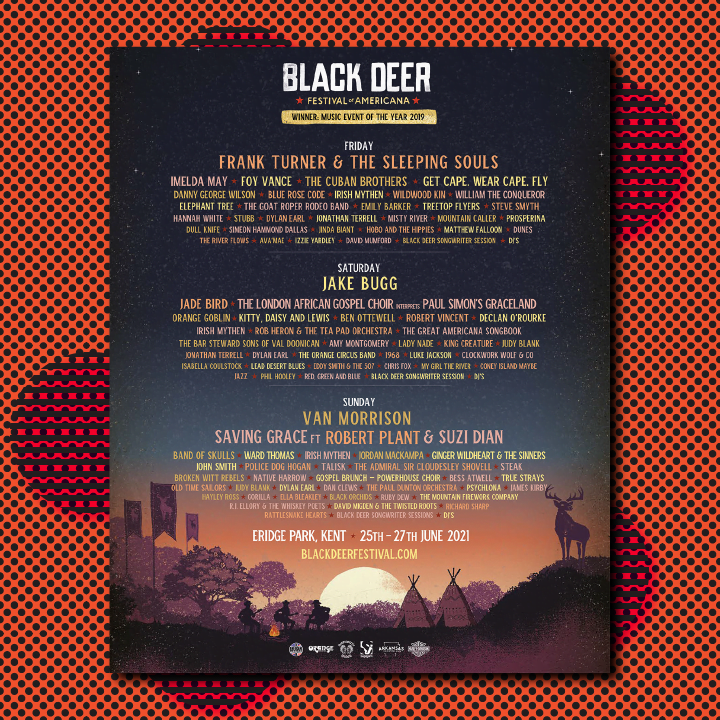All American Grass at the Baseball Field
By: Lively Root
An American past time, baseball wouldn’t be quite what it is without the peanuts and popcorn and, of course, the field. Surprisingly, most fields don’t seem to give you any stats on the green so Livelyroot gives us the scoop:
Patterns
Most greens are taken care of by the groundskeepers at the park and, without a doubt, they take pride in the patterns they create. From checkerboards to logos, circles, and diamonds a-plenty, this process is known as lawn striping, and it’s done by using old-fashioned mowers that have a roller behind the blades. It’s this roller that bends the grass to create the patterns. To create a checkerboard, a mower would pass over the grass in side-by-side rows, first going north to south and then east to west, intersecting the stripes.
Varieties
At most ballparks, they use different types of grass depending on how they want to enhance the game and look of the field. Usually you’ll find fescues, rye, and bluegrass. If they use warm season grass, there’s likely less contrast to the patterns because they have to use Bermuda. Many stadiums use artificial turf instead, as it has many benefits and does not need much maintenance. And it’s not just baseball: many NFL stadiums have already taken the green path and use NFL artificial turf that conserves huge amounts of water.
Learn more about the different types of grass at each stadium below.
Angel Stadium – Tifway 419 bermudagrass
A product of West Coast Turf, the playing surface used in Anaheim is the only one in MLB that is on native soil without a drainage system installed underneath it. The reason for the unusual distinction? The threat of a rainout is almost non-existent. In fact, the Angels have been rained out at home just once in the last 20 years (July 19, 2015). So, it doesn’t really matter that the grass here sits on top of soil rather than sand, as is the helpful for water drainage custom elsewhere.
AT&T Park – Tifway 419 bermudagrass
Grown in Stockton, CA by Delta Bluegrass Company. In the past, the Giants used a Kentucky bluegrass blend called “Blue Rye” that was provided by the same company to cover their field.
Busch Stadium – Kentucky bluegrass
Grown by Graff’s Turf Farms in Fort Morgan, CO, from where the first batch of sod used at the Cardinals’ stadium arrived in March 2006 via 28 flatbed trucks. The field has since been resodded multiple times using Graff’s grass.
Camden Yards – Kentucky bluegrass
Tuckahoe Turf Farms in Hammonton, NJ supplies the turf for Baltimore’s field and its sod farm, which is in center field, behind the batter’s eye. So, it’s from there where grass patches are pulled during the season when repairs are needed. And the Orioles haven’t always used Tuckahoe. For example, when resodding Camden Yards in November 2005 the team chose grass from Collins Wharf Sod Farm in Eden, MD.
Chase Field – Bull’s Eye Bermuda grass
Made by West Coast Turf, who commercially sells the stuff as BOBSod, a play on the nickname of Bank One Ballpark (BOB), the original name of Chase Field and what the D-backs’ home was called when Bull’s Eye Bermuda was installed in 1999. For its first season, the Phoenix ballpark used a zoysia blend called DeAnza, which browned badly over the summer. So, it was replaced by Bull’s Eye, which was designed to thrive in warm to hot climates and has the best shade tolerance of all bermuda grasses, therefore making it ideal for a desert-based retractable-roof stadium.
Citi Field – Kentucky bluegrass
According to Citi Field’s Twitter feed, the playing field consists of four different strains of Kentucky bluegrass. Apollo, Midnight Star, Moonlight and P105 are the specific strains.
Citizens Bank Park – Riviera Bermuda grass (outfield) and Kentucky bluegrass (infield)
To fully cover the Phillies’ field, 101,000 square feet of grass is needed, and all of it was provided by Collins Wharf Sod Farm of Eden, MD. In 2012, their Bermuda blend replaced entirely what had been an all-Kentucky bluegrass field partly due to its ability to better withstand Philadelphia’s weather extremes. However, in 2016 the thicker-than-Bermuda bluegrass was reinstalled in the infield, with the change made to slow down ground balls, which was desired by Phillies personnel, who made the request for the switch. Thus, two different types of Maryland-grown grass now cover the two distinct areas of Philly’s field.
Comerica Park – Kentucky bluegrass
Supplied by Graff’s Turf Farms in Fort Morgan, CO and was laid down in 2014, when Detroit’s field was fully resodded for the first time since 2007.
Coors Field – Kentucky bluegrass blend
The Rockies get their grass from a Colorado company, Graff’s Turf Farms, that is 75 miles northeast of where they play ball in Denver. The five-variety blend of dwarf type Kentucky bluegrass that is used at Coors Field is intended to have a lifespan of about six years.
Dodger Stadium – Tifway 419 bermudagrass overseeded with perennial ryegrass
Grown by West Coast Turf in Palm Desert, CA, where a Bermuda hybrid is overseeded with rye, which is better tolerant to the normally cool temperatures at the beginning of the season. By the summer months the more heat-tolerant Bermuda grass supplants the ryegrass.
Fenway Park – Kentucky bluegrass
The oldest ballpark in baseball gets its grass from New Jersey, and specifically Tuckahoe Turf Farms.
Globe Life Park – Tifway 419 bermudagrass
The Rangers’ grass is Texas grown, as it comes from Tri-Tex Grass, which appropriately has three Texas locations. The current Bermuda blend used in the infield replaced a zoysia in 2013. The outfield has been covered with the same Tifway 419 for a while.
Great American Ball Park – Perennial ryegrass mixture
Ryegrass replaced Kentucky bluegrass on Cincinnati’s field in 2007, when a five-way blend was laid down prior to the season, with the grass a mixture of stuff called Exacta II, Fiesta IV, Linedrive GLS, Panther GLS and SR4600. The original perennial ryegrass sod was used through 2012. When the Reds announced a new field of perennial ryegrass would debut in 2013, they noted it was grown at farms in southeastern Indiana.
Guaranteed Rate Field – Kentucky bluegrass
Really no information is available on the grass used on the South Side of Chicago, other than it’s tended to by “The Sodfather,” the nickname bestowed upon third-generation MLB head groundskeeper Roger Bossard, who assumed the White Sox job in 1983 after taking over for his father, Gene, who had been the head groundskeeper at old Comiskey Park since 1940. So the bluegrass sod at the Cell is watched over by the most experienced caretaker possible.
Kauffman Stadium – Grass blend that varies during the season
As the season progresses, the grass composition at the Royals’ stadium is altered. Its Bermuda is fine for the warm months but cooler times of the season see the grounds crew mixing in bluegrass, fescue or rye, choices which keep the field aesthetically pleasing when temperatures are not ideal for grass growth.
Marlins Park – Platinum TE paspalum
The ballpark debuted in 2012 with a field full of Celebration bermudagrass, began 2013 with an outfield of Tifway 419 Bermuda and infield of Platinum TE paspalum, and finally in 2014 the whole field was covered with the paspalum, which handles Miami’s hot and humid weather much better than the other two grasses the Marlins tried.
Miller Park – Kentucky bluegrass
The four-blend field of bluegrass that the Brewers use is covered during much of the offseason by a special tarp that helps it go through the proper growing cycle so that the playing surface is ready in time for Opening Day. The sod seen at Miller Park is a product of Robert Heath Farms in Coloma, WI.
Minute Maid Park – Seashore Paspalum
In late 2008, the Astros resodded their field with a new kind of turf grass called Platinum TE paspalum. Grown by Phillip Jennings Turf Farms in Soperton, GA, it was invented in 2007 by a company in Florida and is ideal for a retractable roofed stadium due to the lower sunlight requirements needed to maintain its dark green color. While what the Astros now get from Georgia goes by the name Seashore Paspalum, it’s not used on the ballpark’s most notable feature, Tal’s Hill, which is covered by zoysia grass.
Nationals Park – Kentucky bluegrass
When they played at RFK Stadium, the Nationals did so on a Bermuda grass field, mainly because that kind of sod was ideal for soccer and RFK was also home to a Major League Soccer team (D.C. United). When the Nationals finally got a home of their own in 2008, Kentucky bluegrass from New Jersey’s Tuckahoe Turf Farms was chosen for the baseball-only playing surface. The original crop lasted four years then was replaced by the same stuff, which the Nats say is a three-way blend of bluegrass, with Brilliant, Midnight Star and Princeton 105 the varieties used.
Oakland Coliseum – Kentucky bluegrass
The A’s (and Raiders) play on a field of Kentucky bluegrass and West Coast Turf grows what the Coliseum needs on one of their California-based farms. While the type of turf used in Oakland has changed over the years, because the Coliseum is the only venue to host MLB and NFL teams its field must be resodded every year, which happens about a month before the baseball season.
Petco Park – Bandera Bermuda
In 2014, the Padres made the decision to try a new type of Bermuda sod, replacing the “Bull’s Eye” variety that had always been used at Petco Park with what their grass provider, West Coast Turf, calls Bandera, a California-grown grass that doesn’t need much water to thrive.
PNC Park – Kentucky bluegrass
The sod that the Pirates use was grown in New Jersey at Tuckahoe Turf Farms, where four blends of bluegrass were mixed to produce the Pittsburgh playing field. As of the 2009 season, the varieties of bluegrass that comprise the Bucs’ mixture are: Brilliant, Midnight Star, Moonlight and P105. That’s different from when PNC Park opened, as strains with names such as Abbey and Ascot were a part of the Pirates’ original hybrid Kentucky bluegrass field, which came from Berrien Springs, Michigan and a place called the Magic Carpet Turf Farms.
Progressive Field – Kentucky bluegrass
The Indians are one of a handful of MLB clients of Tuckahoe Turf Farms, from whom they now get sod that is grown in New Jersey. The ballpark’s original Kentucky bluegrass came from a state much closer to Ohio, however, as it was grown in neighboring Indiana.
Rogers Centre – AstroTurf 3D Xtreme
The days of a fake field in Toronto are numbered, as the Blue Jays plan to install real grass inside their retractable-roofed home for the 2018 season. So, the now-used turf, which was first laid down in 2015, has only three baseball seasons to get through, although the Rogers Centre baseball field often must be rolled up so the floor underneath can be used for the numerous non-baseball events the venue hosts. The Jays’ current version of AstroTurf, which when removed equals 145 rolls, replaced the AstroTurf GameDay Grass 3D surface that debuted in 2010. AstroTurf is made in the “Carpet Capital of the World,” as Dalton, Georgia is often referred to.
Safeco Field – Kentucky bluegrass and perennial ryegrass mixture
The Mariners’ turf hails from the Washington state capital, as it’s grown by Country Green Turf Farms of Olympia. Except for as-needed repairs, the original playing surface went unaltered through the 2011 season, after which new 100% Kentucky bluegrass sod was installed in the infield. Elsewhere, the grass is a combination of four kinds of bluegrass and two types of perennial ryegrass.
SunTrust Park – Seashore Paspalum Platinum TE
The new home of the Braves is covered with 109,000 square feet of sod that was grown in Foley, AL at Bent Oak Farm before it was installed March 4-5, 2017 in the suburban Atlanta ballpark. SunTrust Park is about 15 miles northwest of Turner Field, where the Braves used the Alabama-grown paspalum grass only in the infield from 2012-2016, when the team used Tifway 419 bermudagrass in the outfield. Now the Braves’ field is completely covered with the same type of grass, which was grown a couple miles from the Gulf of Mexico, making “Seashore” an apt descriptive name for the type of paspalum used.
Target Field – Kentucky bluegrass
Graff’s Turf Farms grew the Twins their grass in Fort Morgan, CO, from where it was transported to Minneapolis in 19 refrigerated trucks. The team and manufacturer both refer to the sod that was installed at Target Field as a 4-way blend of Kentucky bluegrass.
Tropicana Field – TruHop Synthetic Turf
The Rays’ current carpet was installed in time for the 2018 season and was essentially a do-over for the previous surface, which was only used for the 2017 season, after which a replacement was deemed necessary for an aesthetic reason: the initial edition of the TruHop “Triple Crown” synthetic turf manufactured by Shaw Sports Turf didn’t look right on TV. So the 143,370 square feet of it was removed and replaced with a darker colored version of the same style of turf, which then became the sixth artificial field used in the Trop’s history. Prior to switching to a surface made by Calhoun, Georgia-based Shaw, the majors’ only remaining domed stadium had used a fake field supplied by another Georgia company, the well-known AstroTurf brand, as their GameDay Grass 3D was the field of choice for the Rays from 2011-2016.
Wrigley Field – Kentucky bluegrass
The Friendly Confines finds their grass in Colorado, where it’s grown for the Cubs by Graff’s Turf Farms. Since 2008, the sod at Wrigley has taken root on a level playing field. Prior to then, right field was uneven, and the field had a crown to assist in water drainage.
Yankee Stadium – Kentucky bluegrass
Since 2000, the Yankee Stadium grass has come from East Coast Sod & Seed in Pilesgrove, NJ. The sod farm there was purchased in 2000 by Long Island-based DeLea Sod Farms, from whom the Yankees had, on an on and off basis, purchased their field grass over the four decades preceding the opening of the current Stadium.
Field Facts
Kentucky bluegrass is easily the most popular type of playing surface found in major league baseball; it’s the full field grass of choice for 16 ballparks. Additionally, a 17th ballpark, Citizens Bank Park, has a Kentucky bluegrass infield. Eight ballparks have a bermudagrass field, with Tifway 419 the most common variety. Bandera, Bull’s Eye and Riviera bermudagrass are each used at a single ballpark. Tifway 419 bermudagrass gets its name from where it was developed: Tifton, Georgia. At least 10 grass farms provide sod for major league teams. Graff’s Turf Farms, Tuckahoe Turf Farms and West Coast Turf are each the grass growers for five MLB ballparks, which mean those three farms provide the sod for half of all ballparks. Fake grass, like AstroTurf and FieldTurf, has mostly become a field surface of the past thanks to the new generation of ballparks. Teams to directly move from a stadium with a turfed field into a new grass-filled ballpark are the Mariners (1999), Astros (2000), Pirates (2001), Phillies (2004) and Twins (2010). Outfield dimensions are what sets each ballpark’s playing field apart, since rulebook defined distances make all infields the same size and shape. As for the span of minimum and maximum measurements to straight away center field and the left and right field foul poles, they are: Left field: 310′ at Fenway Park to 355′ at Wrigley Field
Center field: 395′ at Dodger Stadium to 436′ at Minute Maid Park
Right field: 302′ at Fenway Park to 353′ at Wrigley Field
More about Lively Root
At Lively Root, the green spaces created have been instrumental in development as horticulturists, for an ideal green space. Lively Root’s plants are home-grown and full-scale fulfillment centers. They only sell eco-friendly products that are packaged and delivered right to your doorstep. Founding members have over a century of horticultural experience as growers, retailers, and landscapers, ranging from small plants to indoor plants, outdoor plants, large trees, and flowering shrubs. They have planted & maintained trees on residential and commercial properties. Plants improve health by purifying the air, soothing stress, making people feel happier, and offering style and ambiance.















